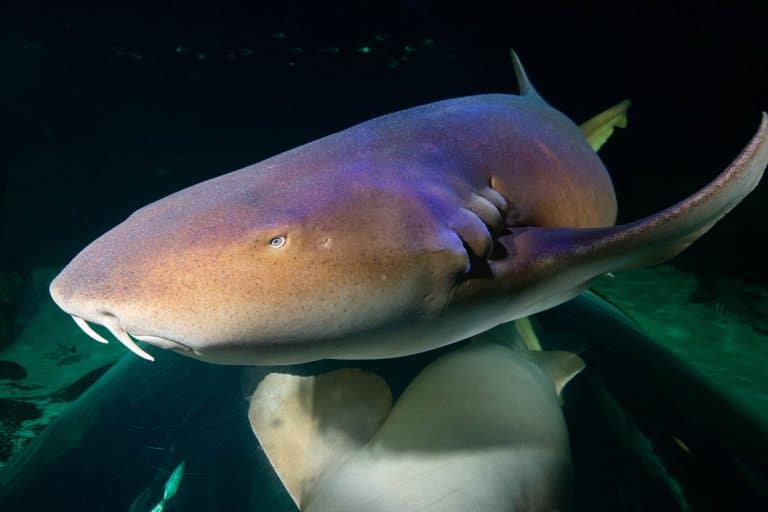Cue the Jaws theme because we’re here to introduce one of the largest sharks on display at Blue Planet Aquarium – our beloved nurse sharks.
We’re joking, of course. Nurse sharks are scarcely comparable to their great white cousins, even if they can grow just as big. These slow-moving suction feeders typically survive on molluscs and crustaceans, so they’re unlikely to feature in any Hollywood blockbusters anytime soon.
That’s not to say they’re not worthy of the silver screen, however. On the contrary, as the largest member of the Blue Planet family, these are some of our most popular animals and a must-see on your exploration of the eye-popping Ocean Exhibit.
Learn more about nurse sharks ahead of your visit to Blue Planet Aquarium below.
Features & Characteristics
Nurse sharks are medium-large sharks that can grow up to 3-4 metres in length when fully grown. They’re typically grey or brown in colour, with two large dorsal fins and an unusually long tail fin that helps them glide through the water.
Slow-moving and seemingly docile, nurse sharks shelter in caves during the day and hunt alone at night. Their mouths, which are located at the very front of the head, contain several rows of small teeth, and are flanked on both sides by “barbels” – fleshy growths that are used to help nurse sharks sense their prey.
Habitat
Nurse sharks have a wide distribution ranging from the western Atlantic to the eastern Pacific. They prefer warm tropical waters and are often found hiding beneath ledges, caves, or coral reefs at surprisingly shallow depths.
Despite their size and power, nurse sharks are often preyed upon by other sharks, including tiger sharks and lemon sharks who also prefer warm, tropical waters. Sadly, their numbers are also threatened by habitat loss, with overfishing and environmental damage responsible for a decline in nurse shark numbers in recent years.
Diet
Nurse sharks may be big, but the creatures they feed upon are some of the smallest in our oceans. These bottom-dwelling suction feeders munch on molluscs and crustaceans, including shrimp, crabs, lobsters, and conchs. They’re also known to eat some small, slow-moving fish, particularly the lizardfish.
Preferring to hunt at night, nurse sharks use the unique barbels around their mouths to detect their next meal, before using their immense sucking force to pull nearby molluscs and crustaceans into their mouths. The suction power of their mouths is thought to be so great, nurse sharks are capable of sucking animals out of gaps and crevices in coral reefs and caves.
Discover
Nurse sharks live in the Ocean Exhibit at Blue Planet Aquarium, our largest and arguably most impressive display. Since these sharks use a “buccal pump” mouth-breathing technique to let them breathe without continuously swimming, they’re the perfect species for displaying in marine centres like Blue Planet Aquarium.
Factfile
How long do nurse sharks live?
Nurse sharks typically live around 20 to 25 years. Being slow growing, they don’t typically reach their full adult size until late in life, often 18-22 years.
Why are nurse sharks endangered?
Nurse sharks are endangered due to fishing, habitat loss and accidental netting. This species also has a low reproductive rate, which is thought to contribute to its decline.
How powerful is a nurse shark bite?
Very powerful! Nurse sharks are thought to have the strongest bite of any suction-feeding animal, with powerful jaws designed for crushing the shells of molluscs and crustaceans.
Do nurse sharks have teeth?
Absolutely! Nurse sharks typically have 30-40 upper teeth and 25-34 lower teeth on average. They’re serrated, small in size, and set in rows to aid chewing and ingestion.
Where do nurse sharks get their name?
It’s been suggested that nurse sharks get their name from the noise they make when feeding – it sounds like a nursing animal.
Feast your eyes on nurse sharks at Blue Planet Aquarium’s beloved Ocean Exhibit. Tap here to book your tickets today.






